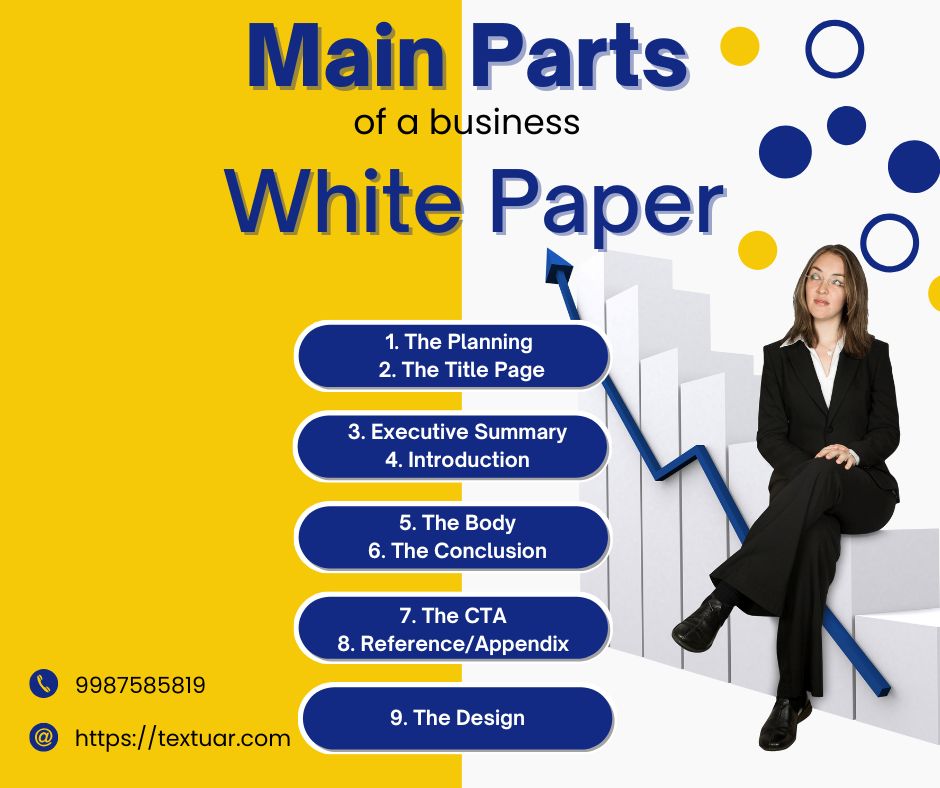UX converts writing improvises content from chaotic to crystal clear. It bridges the gap between user confusion and confident action. Skilled UX content writing by experts like Textuar delivers value at many levels –
- It eliminates friction
- Readers trust UX-oriented content
- It guides readers on their buyer journey
After all, conversion rates soar exponentially when strategic words meet intuitive design.
It may not always be simple, but worry not. We have got the best hacks for you right here.
In this guide, we will look at UX writing fundamentals. Plus, you will come to know about some effective best practices in this area.
What is UX Content Writing?
When users work with digital products (websites or applications), they follow the text appearing on these products. This is exactly what we mean by UX content writing. It is a specialized form of writing that focuses on boosting user experience. This includes text contained in tooltips, buttons, menus, ‘error messages,’ and so on.
When web content creation is user-focused, the core purpose is to offer visitors a brief and clear message about what the website can offer. When it comes to web content, the majority of website owners think that it should be optimized to increase their page rank in search engines.
However, the right approach to content optimization can enhance a website’s position and also the overall user experience. “User experience” refers to how clients feel during and after using a product or service. Basically, it’s the result of all the interactions a client has with a brand or organization.
Therefore, the writing should adopt the brand’s tone and be in line with the objectives of the business. When clients have a good experience, they feel more associated with the organization or its product. And let’s be honest — building this connection is vital to earning client loyalty. That is why writing in a way that upgrades the client experience is so significant.
Why is UX Writing Important?
Microcopy is not a new concept for digital products, and yet people have only recently begun to refer to its creation as UX writing.
The first factor that contributed to UX content writing emerging as a distinct niche is the increasing focus on the role of text in UI. Marketing and design professionals have noted that copy content is a core component that affects both UI and UX. A poorly written text can spoil even the most outstanding appearance of the user interface.
Microcopy, in particular, has been proven in user tests to influence the user experience just as much as the layout and navigation of a system.
When we look at a product from the users’ point of view, we will be able to realize how helpful these small copy hints are for them. This is especially important when people start using new software, short and clear text tips help to adapt quickly. If the menu copy is written professionally, then it is much easier to navigate through the system.
Because of the positive outcome of microcopy on the client experience, a new approach has arisen in copywriting. Essentially, UX writing is the process of creating these small text components to improve the client experience on sites or applications.

What are the Examples of UX Content Writing?
1 – Error Messages
These pop up when something goes wrong during the user journey. Effective error messages explain what the problem is about. They also try to offer a way to resolve the problem. In a way, they help converting a frustrating moment into actionable guidance to progress ahead.
This example of UX content writing helps a lot. With it, users end up moving ahead in the buyer journey rather than abandoning the page itself.
2 – Button Text also Involves UX Content Writing
These short prompts placed on buttons invite user action. A UX writer will make short yet clear and accurate text for the same. The users will come to know exactly what will happen when they click on the button.
It helps create a sense of urgency without underhanded click-bait’y’ tactics.
3 – Form field Labels
These are needed when users need to fill up a form. Good labels are a classic use case of UX content writing. They use plain language and correctly indicate the fields that need to be filled.
Such labels help a lot in avoiding cognitive load. Plus, they help in feeding the correct inputs in the relevant fields the first time itself.
4 – Navigation Labels
They help the users to move through a site or app and achieve the goal for which they visited the product in the first place.
Who Writes UX Content?
We looked at what UX content writing is. But there is still one important question that has not been answered. Whose job is it to write the content?
The direction didn’t develop on its own, so there are experts behind it. The job of a UX writer is growing, and now we see more job opportunities from organizations. UX writers focus on creating short text (microcopy) to improve the client experience and make navigation simpler.
UX writing is still growing as a field, which is why the responsibility for microcopy creation usually falls on marketers and copywriters. These people have been writing microcopy for years before the term UX writing was coined, and they are still writing microcopy as part of their roles.
However, writing copy for UX isn’t exclusive to writers only. Designers also frequently attempt to venture into UX writing. While they may not be experts in the creation of copy, they understand everything about how information is organized and how product navigation works. Plus, UI/UX designers study the target audience to know how to present visual information in a way that’s easy for users to understand.
Copywriters and designers can do UX content writing. It’s always much better to team up and exchange knowledge to achieve better results. IA professionals can team up with copywriters and designers to create the perfect copy for a good user experience. This is often the case with many companies today. However, if a company has many projects that involve a lot of UX writing, they must hire a UX content writer to get the most productivity.
What are the Key Principles of Good UX Content Writing?
Let’s get into the critical principles of what makes a great microcopy and how we can accomplish them.
1 – UX Content is Usable
Good and usable microcopy supports users to navigate your product or interface efficiently without putting too much of their brain into it.
If your customer continues to ask, this is like:
- How to navigate
- How your product work
- How to complete tasks
This is a sign that the product is not usable. Usable microcopy refers to words that make the product easier to use.
While writing and editing content, the concept of usability is to be prioritized before making the site entertaining. If the product is not efficient, then even an excellent tagline can be irritating. The functionality of your product should come first before infusing a persona to it.
To make your microcopy more usable, consider the following tips:
- Understanding how your interface works by spending time directly with your developers and by constantly asking the question, ‘What if?’
- By doing user interviews and usability tests, know your users and what matters to them.
2 – Make it Helpful
If your UX content writing is to be usable, it has to be logical and clear, but getting there is only the beginning. The next step is to make your copy informative, giving the users little pieces of information they didn’t know they needed. In other words, the helpful copy is not only informative and easy to understand but also useful.
To get the most beneficial UX writing, it is crucial to target two objectives:
- The functions of the app
- The user’s goals
Also, think about what they are trying to do and what extra information could make their experience easier.

3 – Make it Accessible
When discussing accessible UX content writing we therefore refer to creating microcopy for people with disabilities. This actually means writing the texts in plain language, which is helpful not only to disabled people but all of the users. You might be wondering if this group is a small one, but there are approximately 1.3 billion people with disabilities, which is 16% of the world’s population.
The question that now arises is: How could you increase the readability and accessibility of your texts? One group to consider is people with vision problems. They will listen to audio output to make them grasp what is displayed on the screen. To help them, here are a few simple tips: avoid tricky words and make sure every image or icon has an ALT description.
4 – Ensuring Clarity in UX Content Writing
Marketing copywriters frequently give priority to wit and wordplay to engage the readers immediately. Writing microcopy, therefore, should be concise. If it is not clear, then it can also not be usable, helpful, or accessible.
Always ask things like:
- Will it be easy to understand for a first-time user?
- Will it make sense if someone reads it quickly, just once?
- Will the oldest and youngest users understand this?
- Will it be clear for someone who’s stressed or in a hurry?
5 – It needs to be Relevant to the Context
Great microcopy is relevant and changes based on the situation or context it’s used. It adjusts to the client’s necessities as they change during the experience. The words, tone, and length should all fit the situation to be suitable.
For example, we often simply categorize microcopy as being “brief.” Sometimes, it is better to use 3 words than to use 10 words. It depends on the situation and the requirements of the user.
While brand voice and character in microcopy frequently get a lot of attention, tone plays a huge part as well. The tone is how your voice changes to fit various situations. For instance, a confirmation message should feel different from an error message to suit the context.
To make your microcopy more appropriate:
- While working on design, begin by focusing on what clients need. Then, build the copy and design to address those issues. Trying to change things later is a lot harder.
- Test your copy cautiously, for example, by running usability tests and doing field research to cover various situations.
- Get to know your clients well, comprehend the situations they’ll be in, and how the interface works.
The table listed below captures the key principles for making microscopy appropriate and effective.
| Contextual Relevance | Microcopy should adapt to the user’s changing needs and situation. |
| Concise Yet Effective | The length and tone should fit the context, sometimes fewer words are better. |
| Tone Adaptation | The tone should vary depending on the situation (e.g., confirmation vs. error messages). |
| User-Centered Design | Focus on client needs first, then build copy and design accordingly. |
| Testing for Appropriateness | Conduct usability tests and field research to refine microcopy. |
| Understanding Users | Know users’ needs and how they interact with the interface. |
6 – Use the Active Voice
If you apply the active voice in your microcopy, the user gets to understand explicitly what needs to be done. The interface is created for the user to take action on it, and the active voice encourages this. It adds more life to the writing and makes it more effective and meaningful for the user.
In most cases, it’s smarter to use the active voice, although there are times when the action is a higher priority than the person doing it.
7 – Use Numbers for Impact
Numbers are powerful because individuals automatically associate them with facts, sizes, and useful data. That is the reason many brand landing pages use numbers. They help show value and build trust with guests.
Beyond that, odd numbers are a potent weapon for content writers. Titles like “13 UX Writing Tips That Will Only Take 15 Minutes to Master” compel users to click.
For UX writers, numerals are a handy tool that helps to make a copy shorter. They are used to help classify the content and save time for users to scan for information.
8 – Perform Constant A/B Testing
There is a lot of work in creating user interfaces and this involves designing and writing microcopy. The A/B testing phase is very important as it will assist you in determining which aspects encourage the users to act and engage with your app, interface, or software.
Keep in mind that whatever sounds logical, well-written, and clear to you may be vague and ambiguous to the users. You have to run several tests to find the copy that works for your needs. You’ll realize if a copy is overly promotional or unclear and create a cleaner copy through A/B testing.

9 – UX Content Loves Action-Oriented Language
UX content writing is action-oriented. Its key objective is to guide users through the desired action during their time on the site. To achieve this, the language you use has to be action-oriented. Every action-oriented copy must follow the basic rule never to start asking anything from the user without first complimenting them.
We must not also forget the fact that action-oriented language uses less of the screen space hence being friendly for mobile devices and more usable. It makes customers feel that they are in charge of the product they are using when you utilize action-oriented language. Plus, it clearly shows them what they need to do. This simplifies everything and reduces mental effort.
Final Thoughts
UX writing makes a user’s experience smoother and more enriching. That is why the designers and developers should listen to the content writers on which words to use and where to place them for the best usability. In essence, the combination of good content and good design is what defines the best websites.
For your design to be more user-friendly, you can hire a UX content writer for your team. Textuar’s experts can help you come up with amazing bylines and button text that take your UX design to the next level of ‘Wow!’
FAQs
What is microcopy in UX content writing?
Microcopy is the small bit of text that is part of digital products, like buttons and error messages. It is mainly created to enable people to know how to explore an interface. Such type of writing is essential because it takes the user through the process and makes the product easier to use.
What are the key guidelines for good UX writing?
The main principles of UX content writing are.
- Making content usable (easy to navigate)
- Usable (providing required information)
- Accessible (considering users with disabilities)
- Clear (avoiding confusing language)
The writing should be done based on different conditions and should be checked from time to time to see if it helps the users.
What is the role of the action-oriented language in the UX writing?
Action-oriented language helps clients understand precisely the exact thing to do and causes them to feel in charge. It is particularly helpful because it takes up less screen space and reduces mental effort for clients. A good tip is to begin with a positive note before asking clients to take action.
How can I test if my UX writing is effective?
The best way is to do the A/B testing on a regular basis, so you experiment with different versions of your copy to determine which one is more effective. It might be obvious to you, but it can be confusing to your users, so it’s always wise to conduct usability tests and get feedback from time to time. It tells you whether your copy is too salesy or vague and enables you to come up with better content.









